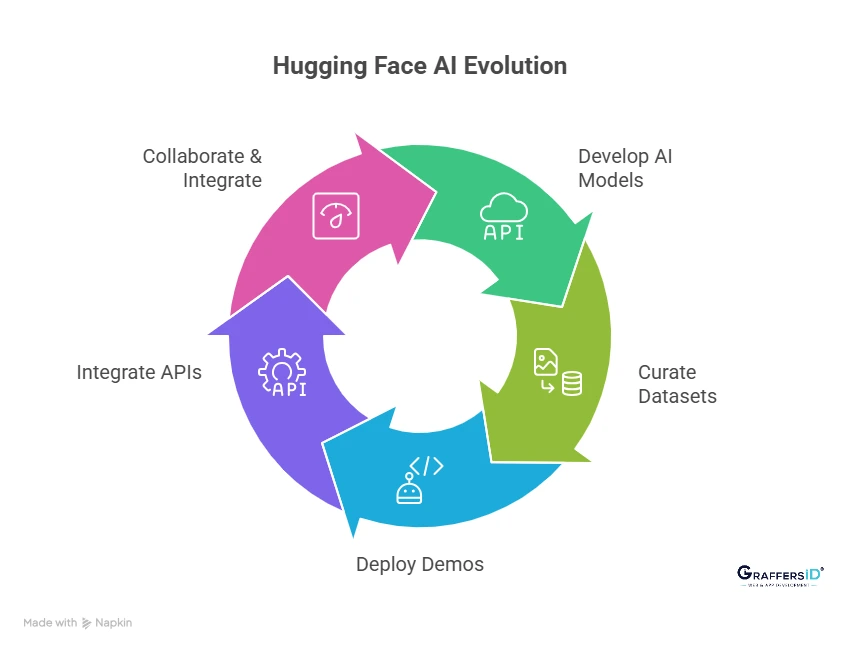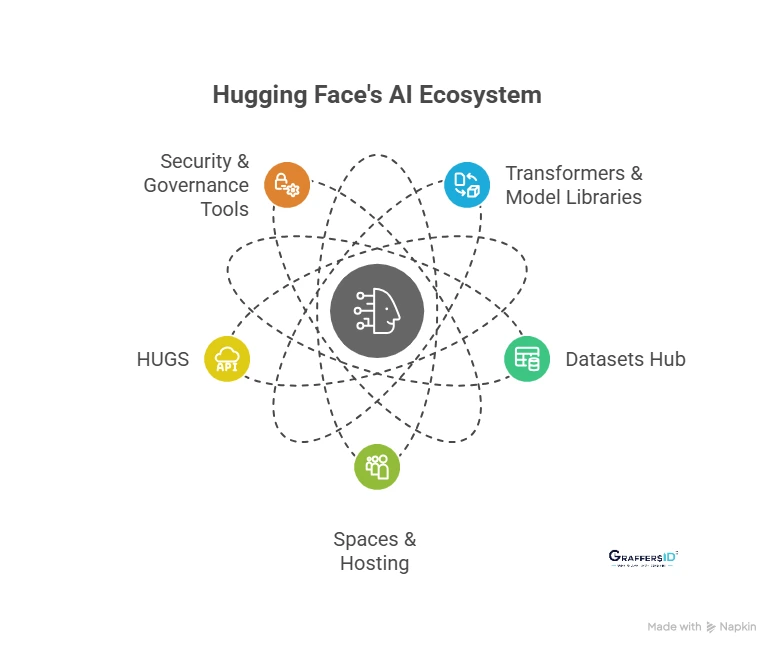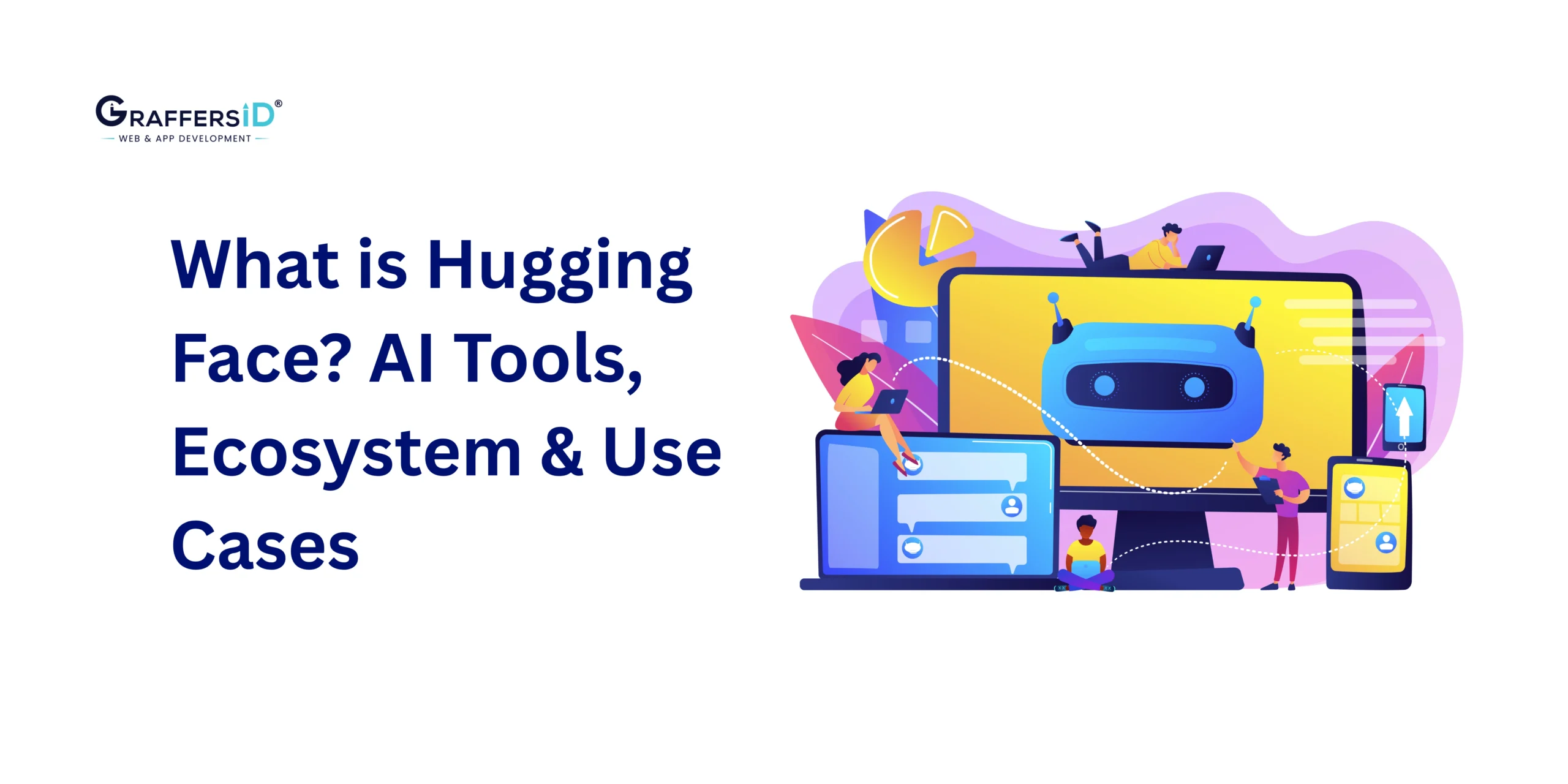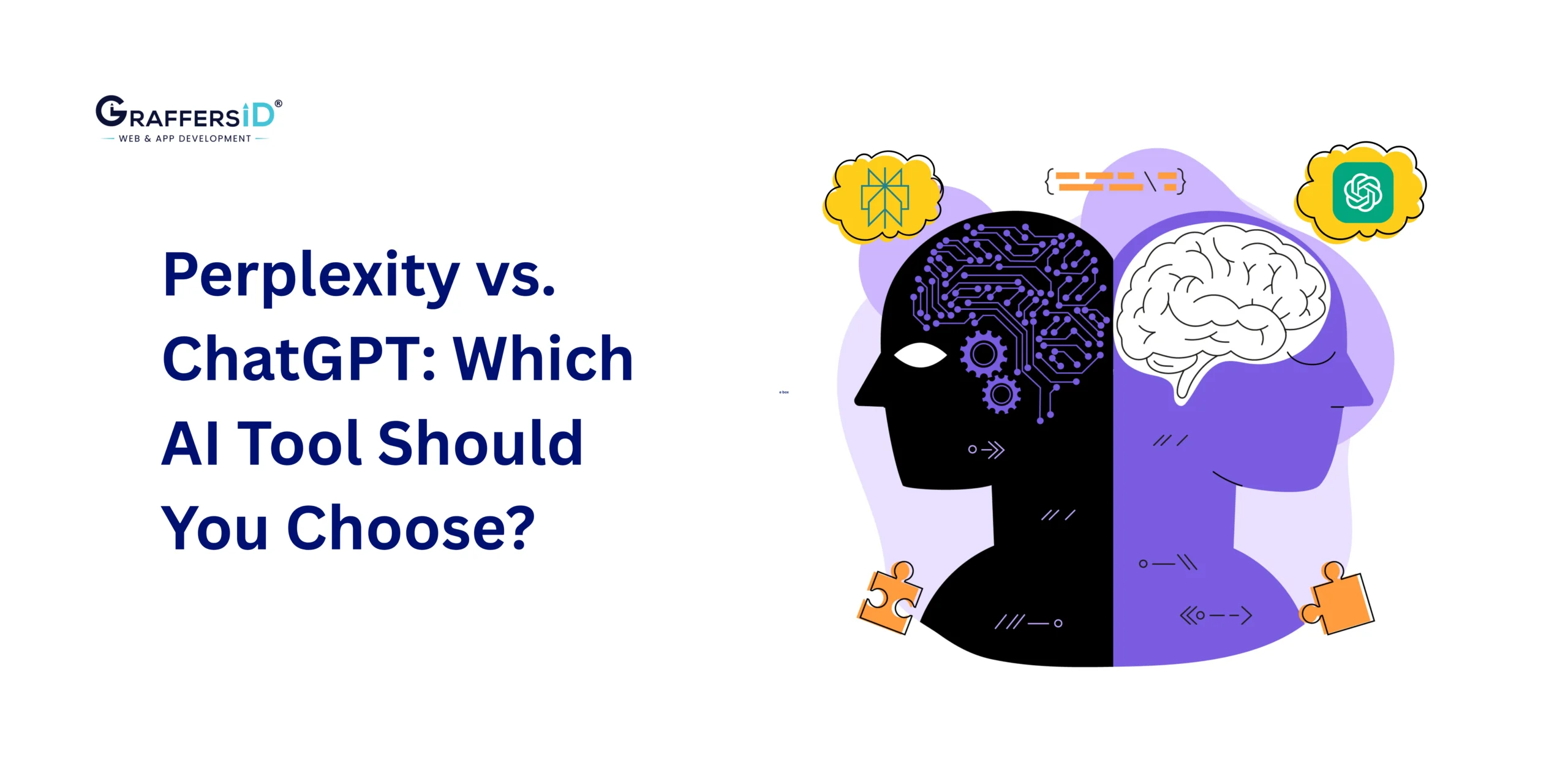Can Hugging Face transform enterprise AI in 2026?
Once a simple chatbot project, Hugging Face has become a leading open-source AI platform powering research, development, and enterprise innovation. Companies globally use it to train, fine-tune, and deploy advanced AI models across natural language processing (NLP), computer vision, speech, and multimodal applications.
By making state-of-the-art AI accessible, Hugging Face has evolved from a developer-focused platform to a strategic business tool that enhances efficiency, improves customer experiences, and accelerates innovation.
In this blog, we’ll break down Hugging Face in 2026, its tools, ecosystem, enterprise applications, challenges, and future trends to help CTOs, CEOs, and product leaders understand its potential for business growth.
What Is Hugging Face? An Overview of the Platform in 2026
Hugging Face has grown from a simple chatbot project into a leading open-source AI platform in 2026. It helps developers and businesses build, fine-tune, and deploy advanced AI models across NLP, computer vision, speech, and multimodal applications.
Key features include:
-
Transformers Library: Thousands of pre-trained AI models.
-
Datasets Hub: Curated datasets for fast, reproducible AI development.
-
Spaces: Host and showcase AI demos and prototypes.
-
Inference APIs: Easy production deployment of models.
-
HUGS: Enterprise-ready deployment with scalability and private hosting.
Hugging Face democratizes AI, supports enterprise innovation, and provides flexible deployment options, making it a vital tool for businesses in 2026.
Read More: What is AnythingLLM? A 2026 Guide for CTOs to Build Secure Custom AI Agents
Evolution of Hugging Face
Hugging Face began as a playful chatbot but quickly became one of the most influential AI platforms worldwide. Its Transformers library made pretrained NLP models widely accessible, allowing teams to build sophisticated AI applications without starting from scratch.
Over time, Hugging Face expanded into a full enterprise-ready ecosystem:

-
Datasets Hub: A central repository for curated, shareable datasets, enabling reproducible and fast AI development.
-
Spaces: A platform for deploying interactive demos and prototypes, helping teams showcase AI models quickly.
-
Inference APIs: Managed endpoints to deploy AI models into production with minimal setup.
-
Collaborations & Integrations: Partnerships with cloud providers and hardware accelerators to optimize performance.
By 2026, Hugging Face will support the entire AI lifecycle, from experimentation to large-scale deployment across industries including healthcare, finance, retail, and robotics.
AI Tools and Platforms of Hugging Face in 2026
Hugging Face provides a comprehensive set of tools to build, fine-tune, and deploy AI models. Here’s a closer look:

1. Transformers & Model Libraries
The Transformers library remains the backbone, offering thousands of pre-trained models for NLP, computer vision, speech, and multimodal AI. Key 2026 features:
- Efficient fine-tuning with minimal compute resources.
- Support for low-resource languages, enabling global inclusivity.
- Optimized performance for enterprise-scale deployments.
This accelerates development, reduces costs, and allows rapid AI integration into business workflows.
2. Datasets Hub
The Datasets Hub is the central repository for open-source data in 2026. It allows teams to:
-
Streamline data ingestion and preprocessing.
-
Access large-scale curated datasets with version control.
-
Benchmark models quickly across multiple datasets.
For enterprises, this reduces the time and cost associated with preparing AI-ready data.
Read More: What is LangChain in 2025: Architecture, Agents, RAG & Use Cases for Next-Gen AI Applications
3. Spaces & Hosting
Spaces allow easy deployment of interactive AI applications:
-
Rapid deployment pipelines for prototypes and production apps.
-
Scalability, enabling apps to handle enterprise-level traffic.
-
Multimodal support, including text, image, audio, and video interfaces.
Spaces make experimentation and demoing AI-powered solutions simple and efficient.
4. HUGS (Hugging Face Unify Global Service)
The HUGS platform is one of the most impactful Hugging Face additions in 2026. It provides:
-
Zero-configuration deployment, reducing setup time.
-
Enterprise-ready APIs for scalable AI adoption.
-
Private hosting options to comply with industry regulations and data privacy standards.
This platform connects Hugging Face capabilities directly with enterprise infrastructure, simplifying large-scale AI adoption.
5. Security & Governance Tools
This platform connects Hugging Face capabilities directly with enterprise infrastructure, simplifying large-scale AI adoption.
-
Safetensors for secure and tamper-proof model sharing.
-
Automated model scanning to detect biased, harmful, or unsafe outputs.
-
Governance layers ensuring adherence to global AI regulations.
These features are particularly important for regulated industries like healthcare, finance, and government, ensuring that AI adoption is both safe and compliant.
Enterprise AI Applications of Hugging Face in 2026
Enterprise AI demands trust and compliance:

- Customer Support & Conversational AI: Hugging Face powers advanced chatbots and virtual assistants that handle multilingual, context-aware conversations. Enterprises use these AI models to improve customer support efficiency, reduce operational costs, and enhance user experience.
- Healthcare & Finance: In healthcare, Hugging Face enables AI-driven diagnostics, patient engagement, and medical research. In finance, it supports fraud detection, compliance monitoring, and real-time decision-making, allowing businesses to deploy secure, customized AI solutions.
- Retail & E-commerce: Retailers leverage Hugging Face for personalized recommendations, demand forecasting, and smarter search. Multimodal AI integration enables richer experiences, including voice-assisted shopping and augmented reality personalization.
- AI Agents & Automation: AI agents powered by Hugging Face automate repetitive workflows, document processing, and enterprise operations. This trend helps businesses boost productivity while reducing manual intervention.
- Robotics & Multimodal AI: Hugging Face’s multimodal AI models extend into robotics, enabling machines to process language, vision, and movement. These applications create new opportunities across manufacturing, logistics, and healthcare.
Read More: How to Build an AI Chatbot in 2026: Types, Tech Stack & Step-by-Step Guide
Challenges for Enterprises Using Hugging Face in 2026
Despite its potential, adoption comes with challenges:
- Scalability: Deploying large AI models with low latency can be resource-intensive, requiring advanced infrastructure and careful optimization to handle high-volume enterprise workloads.
- Data Security: Protecting sensitive information during training and inference is critical, especially for industries like healthcare and finance that operate under strict privacy regulations.
- Regulatory Compliance: Enterprises must navigate evolving global AI governance standards to ensure responsible use, ethical AI deployment, and alignment with industry-specific compliance requirements.
- Integration Complexity: Combining Hugging Face tools with existing enterprise systems and legacy software can be challenging, often requiring custom workflows and robust development pipelines.
- Talent Gaps: Finding developers skilled in both AI modeling and open-source frameworks remains a barrier, making it essential to build teams with specialized expertise for successful deployment.
Overcoming these challenges requires careful planning, skilled teams, and strategic partnerships.
Future Trends of Hugging Face & OpenAI Ecosystems: 2026 & Beyond

- Rise of AI Agents: AI agents are evolving from simple chatbots to autonomous systems that can make decisions and execute tasks. Hugging Face is becoming a key platform driving this enterprise AI transformation.
- Growth of Multimodal Models: Next-generation models can process text, images, video, and speech together. This enables advanced applications in media, retail, education, and more.
- Hybrid Deployments: Enterprises are adopting hybrid AI setups that combine cloud scalability with on-premise security. Hugging Face tools make it easier to implement these flexible deployment strategies.
- Competition with Closed Ecosystems: Open-source Hugging Face competes with proprietary platforms like OpenAI, Anthropic, and Google. Businesses are evaluating trade-offs between open collaboration and vendor-controlled AI solutions.
- Role in Answer Engine Optimization (AEO): Optimizing Hugging Face models for concise, contextual outputs boosts visibility in AI-powered search. This makes enterprises more discoverable in AI-driven answer engines.
Conclusion
By 2026, Hugging Face will be a strategic driver of enterprise AI, enabling organizations to build, deploy, and scale intelligent applications. From conversational AI to multimodal robotics and automation, its tools, ecosystem, and community are redefining AI possibilities.
Successfully leveraging Hugging Face requires expertise in integration, governance, and scaling. Enterprises that master these gain a competitive edge, accelerate innovation, and maintain compliance and security.
GraffersID provides expert AI development services, custom integrations, and skilled remote developers. Partner with GraffersID to implement, optimize, and scale AI solutions and stay ahead in the fast-evolving AI landscape.
Hire AI Developers with GraffersID today!





